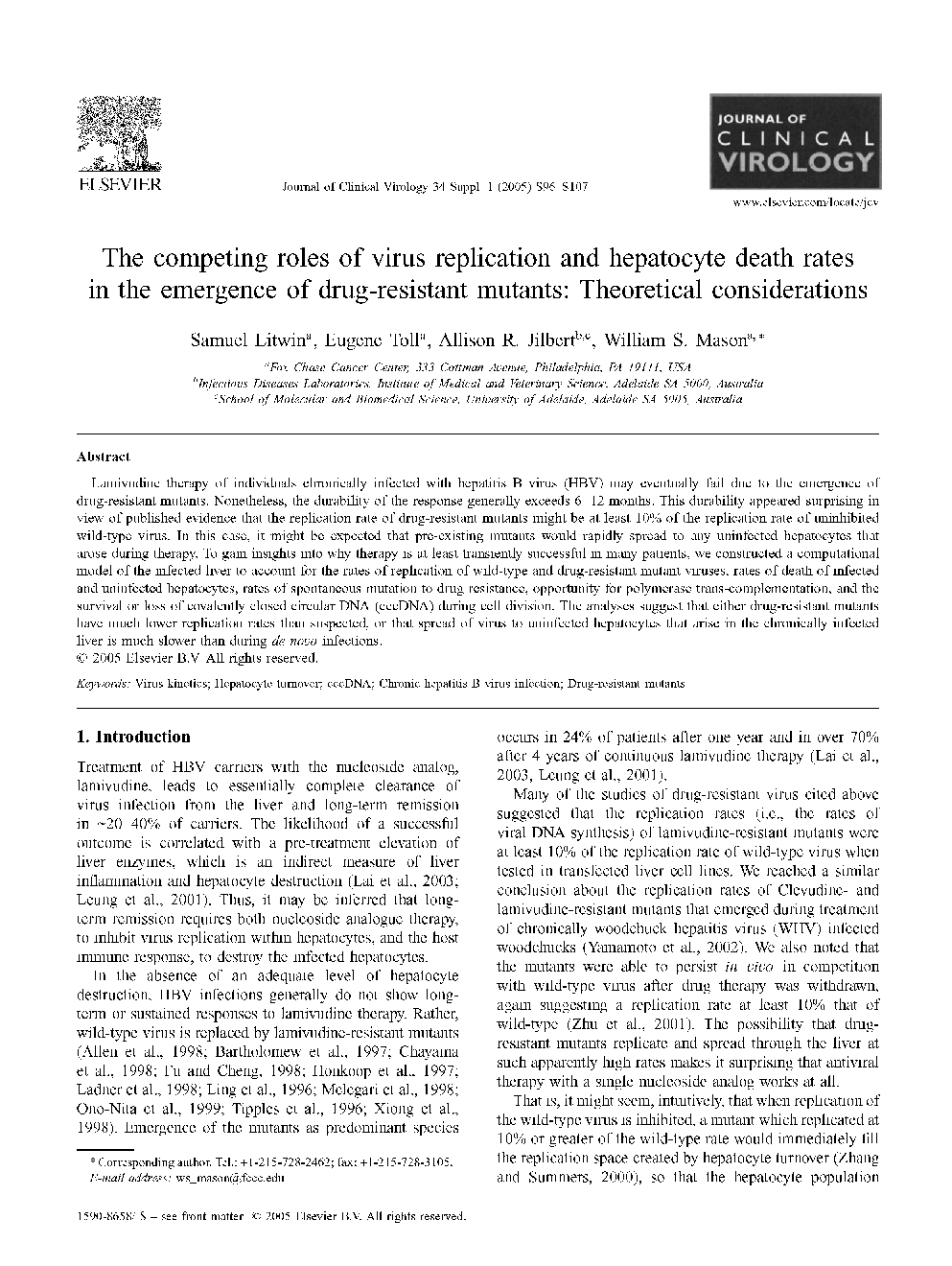| Article ID | Journal | Published Year | Pages | File Type |
|---|---|---|---|---|
| 9268332 | Journal of Clinical Virology | 2005 | 12 Pages |
Abstract
Lamivudine therapy of individuals chronically infected with hepatitis B virus (HBV) may eventually fail due to the emergence of drug-resistant mutants. Nonetheless, the durability of the response generally exceeds 6-12 months. This durability appeared surprising in view of published evidence that the replication rate of drug-resistant mutants might be at least 10% of the replication rate of uninhibited wild-type virus. In this case, it might be expected that pre-existing mutants would rapidly spread to any uninfected hepatocytes that arose during therapy. To gain insights into why therapy is at least transiently successful in many patients, we constructed a computational model of the infected liver to account for the rates of replication of wild-type and drug-resistant mutant viruses, rates of death of infected and uninfected hepatocytes, rates of spontaneous mutation to drug resistance, opportunity for polymerase trans-complementation, and the survival or loss of covalently closed circular DNA (cccDNA) during cell division. The analyses suggest that either drug-resistant mutants have much lower replication rates than suspected, or that spread of virus to uninfected hepatocytes that arise in the chronically infected liver is much slower than during de novo infections.
Related Topics
Life Sciences
Immunology and Microbiology
Applied Microbiology and Biotechnology
Authors
Samuel Litwin, Eugene Toll, Allison R. Jilbert, William S. Mason,
